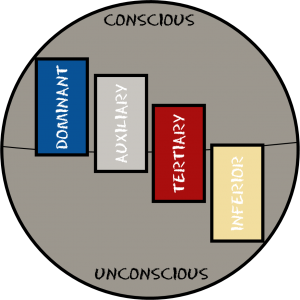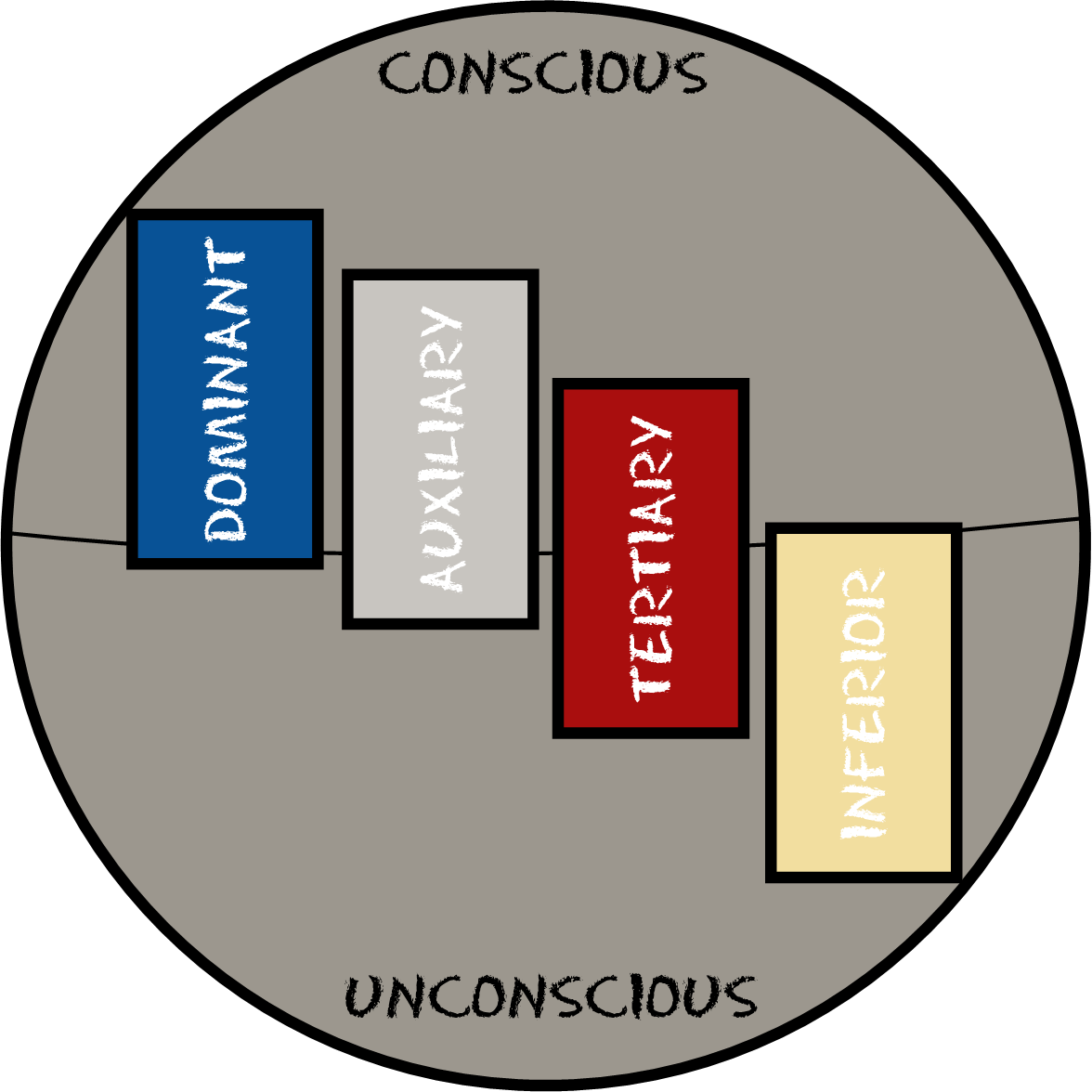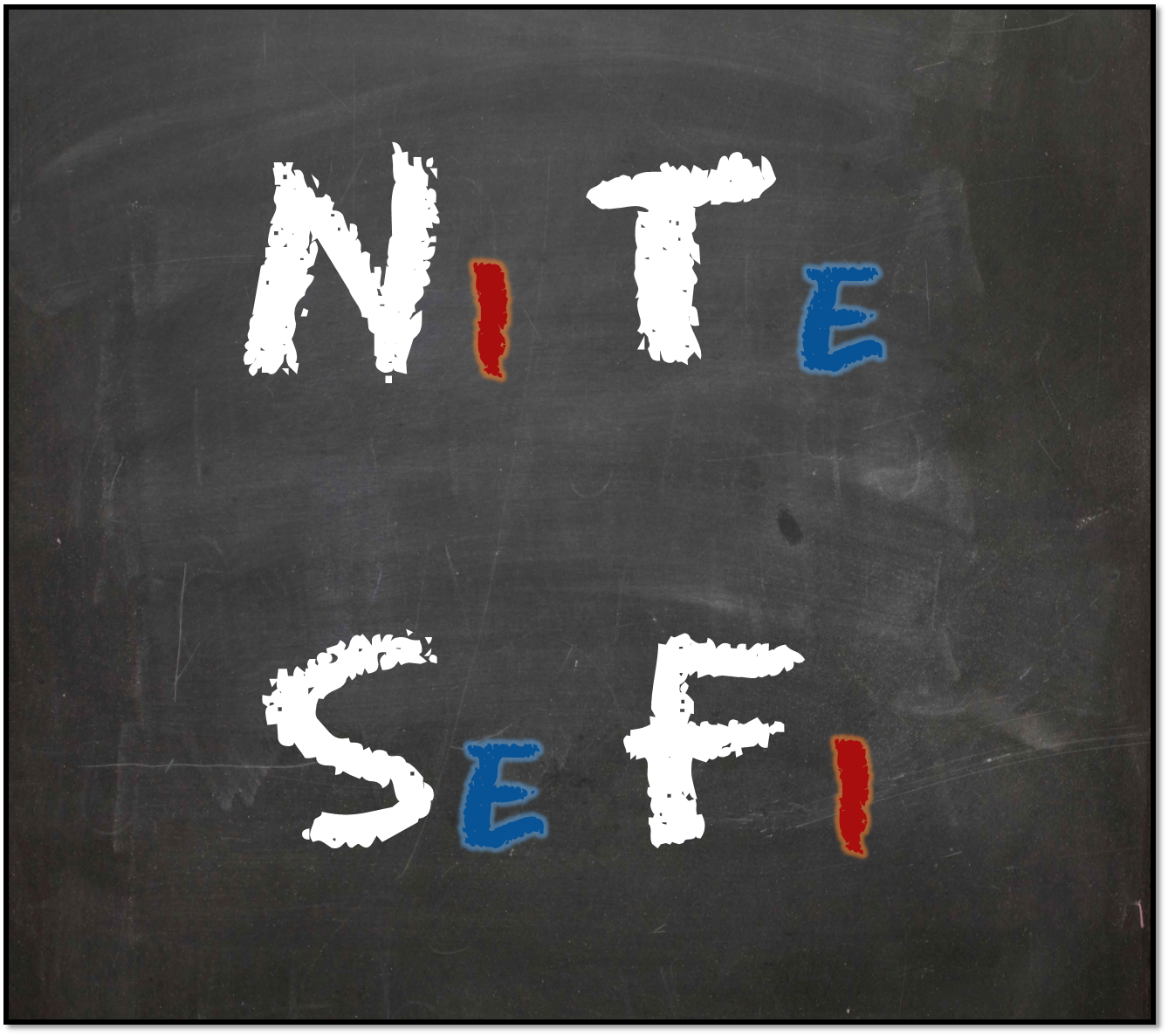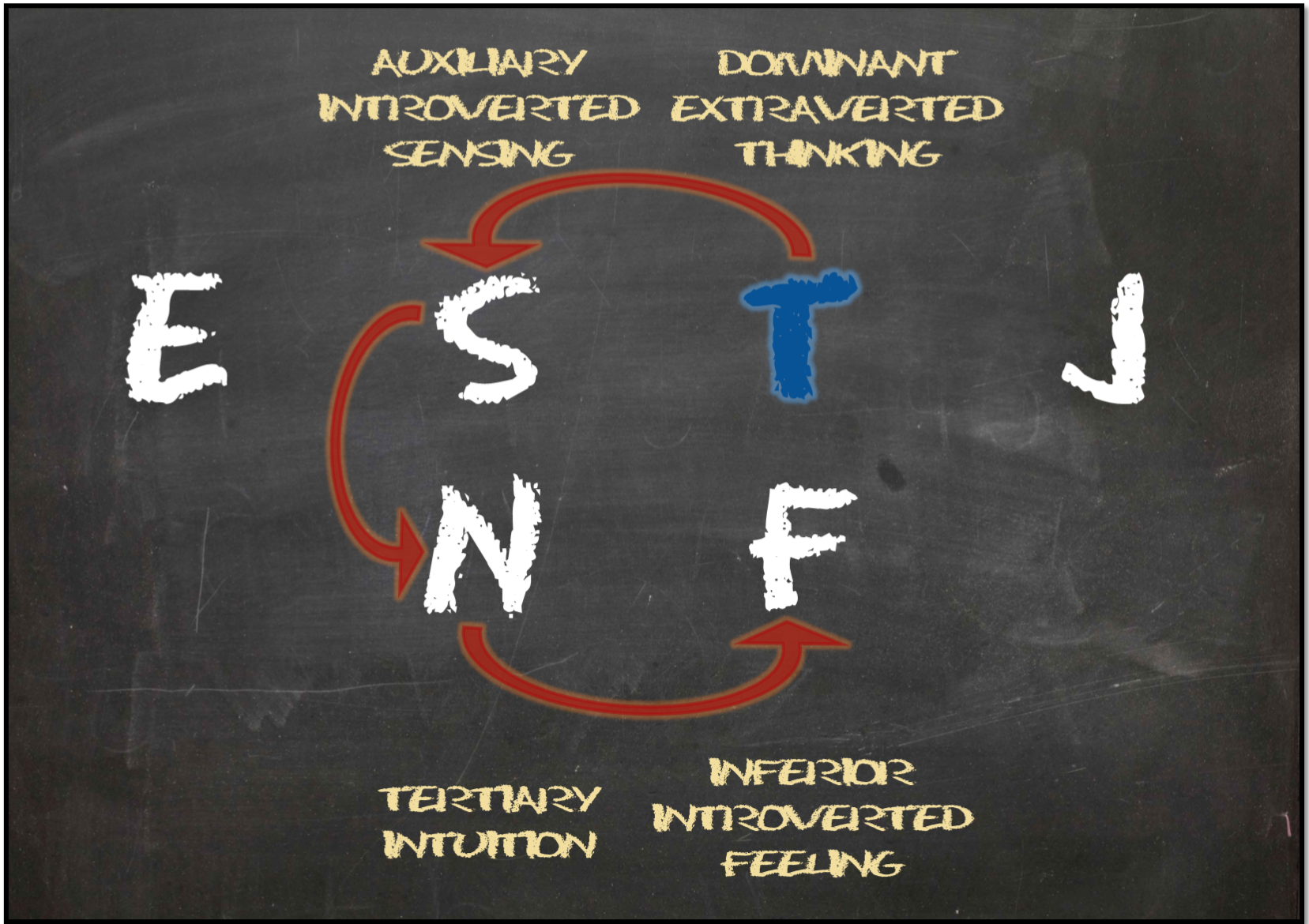
 Recently, I have written articles that look at pairs of preferences in Myers-Briggs® types (see The Four Attitude Pairs and The Four Function Pairs). In those articles, I described the idea that types are more than the sum of their parts. An individual’s type preferences are synergistic. They work together in a specific way to form a well-balanced personality, through what is called type dynamics
Recently, I have written articles that look at pairs of preferences in Myers-Briggs® types (see The Four Attitude Pairs and The Four Function Pairs). In those articles, I described the idea that types are more than the sum of their parts. An individual’s type preferences are synergistic. They work together in a specific way to form a well-balanced personality, through what is called type dynamics
In thinking about a well-balanced Myers-Briggs® type, you may assume that this means a person has developed her own preferences (all four letters of type) equally. You could also conclude that a well-balanced type would be one that uses all four functions (S, N, T, and F) evenly in both Introverted and Extraverted ways. While these ideas are reasonable conclusions to come to, they do not describe a well-balanced type in Myers-Briggs®!
Imagine a small child learning language. While it is wonderful to raise a child to be bilingual, it is commonly known that children who are simultaneously raised to speak two languages often begin speaking later than children who are raised to speak one language. While I am in no way an expert on learning languages, I think this phenomena makes perfect sense due to the child having to split his or her attention between learning two different languages. They have to work out which language is which, and they have to learn to switch gears to prevent speaking half of a sentence in one language and the other half in the other language.
Now imagine what it would be like to teach a child four languages at once in both written and spoken forms. While I have never experienced this, it seems like chaos would likely ensue, and it also seems that it would take the child an incredible amount of time to master any of the languages. This metaphor represents what it would likely be like to develop all functions of MBTI® in both attitudes at once! It would be difficult to accomplish a task without constantly looking at it from other perspectives and becoming confused.
In Jungian theory and the theory of Myers-Briggs®, type balance and type dynamics involve a hierarchy. Each individual uses all four of the functions of type (Sensing, Intuition, Thinking, and Feeling) in some capacity and in a particular order. Each person needs to have a proper balance of taking in information, through the perceiving function (S or N) and making decisions, through the judging function (T or F). In each type, one of these preferences is dominant, while the other is secondary, and the functions that do not appear in type play other roles. Below is a description of the hierarchy of functions in type.
- The Dominant Function:
- Likely to be most developed
- Will either be the person’s perception (S or N) or judgment (T or F) preference and be in charge and used most often
- Exists almost completely in conscious mind
- Used in the attitude of the individual (Introverted for Introverts and Extraverted for Extraverts)
- The Auxiliary (or Secondary) Function:
- Second most well-developed
- Will either be the person’s perception (S or N) or judgment (T or F) preference, whichever preference is not dominant, and be used in conjunction with dominant process
- Exists largely but not completely in the conscious mind
- Used in the opposite attitude of the individual (Extraverted for Introverts and Introverted for Extraverts)
- The Tertiary Function:
- Less developed preference, opposite of auxiliary function
- Will be used as needed, but less often than dominant and auxiliary
- Exists about half in conscious and half in unconscious mind
- Some say used in opposite attitude of dominant preference (Extraverted for Introverts and Introverted for Extraverts), while others believe used in same attitude as individual, and still others believe used in either attitude, depending on how it is needed in the moment
- The Inferior Function:
- Least developed preference, opposite of dominant function
- May be used for relaxation and will take over during times of extreme stress (see Stress and the 16 Types)
- Exists almost completely in unconscious mind
- Used in the opposite attitude of the dominant preference (and the individual)
Essentially, type dynamics allows individuals to learn mastery of their dominant process, by focusing most energy there. This allows the person to explore the complexities and nuances of the preference, and it provides ease when having to complete tasks in day-to-day life, due to the confidence level that accompanies one solid, well-developed preference. Of course, the auxiliary preference is incredibly important, as is the balance between dominant and auxiliary preferences, because perception needs judgement to pull the trigger and judgment needs perception to be well-informed.
I hope this article has helped you begin to understand the basics of type dynamics and the reasons for their importance. This topic can get deep and complicated, so I have decided to break it up into multiple articles. Future articles will discuss the formula for determining dominant through inferior preferences for the 16 types, and I will explain Jung’s theory of how type develops over the lifespan. Please feel free to ask questions or leave comments below. If you would like to see the dominant through inferior preferences for your type, you can see them written at the top of each of the 16 type descriptions.




Pingback: Type Dynamics: Development Over the Lifespan | Personality Playbook
Pingback: Type Dynamics: Extraverted and Introverted Forms of the Functions | Personality Playbook
– let me first say I am enjoying your web site very much
– aside from that, you can add to the INTJ Nightmare list “people who continue to use the spelling “e x t r a v e r t” as if it were the correct way to spell “e x t r o v e r t”
– Definition of EXTRO: outward — compare intro-
– Full Definition of EXTRA 1a : more than is due, usual, or necessary
– female INTJ…….. you know 🙂
Thanks for the compliment on the site, Kerri! I can understand your frustration with the spelling of “extravert” versus “extrovert”. That being said, when speaking of Myers-Briggs or any type of Jungian psychology, the correct spelling is “extravert”. Both spellings have their place in different areas of psychology, and I am actually driven crazy when I see individuals write MBTI articles where they spell the word with an “o”. I am not bothered by it elsewhere, but in the MBTI world, the “a” is correct, albeit confusing. 🙂 Thanks for reading!
Men per woman:
Northern Mariana Islands: 0.77
Russia: 0.86
Puerto Rico: 0.92
United States: 0.97
Canada: 0.98
United Kingdom: 0.98
Australia: 0.99
Iceland: 1
India: 1.06
Greenland: 1.12
Qatar: 1.87
The world average is 1.01.
Thank you so much for this and your other articles on Myers-Briggs types. I am reading some of the books you recommended and absolutely loving them!
You mentioned that preferences that do not appear in type play other roles. Could you elaborate on that? I’ve been desperately trying to understand what happened to the “other four” preferences! 🙂
Thanks again for your articles. I’m thinking of signing up for some MBTI training, thanks to the information you’ve shared.
Hi Stephanie,
Thank you so much for your kind words on the site!
I actually went back tot his article and tweaked some of the wording, based on your question, to make it more clear. To be more accurate, the FUNCTIONS that do not appear in type play other roles, meaning the middle two preferences of type. Functions are all preferences, but not all preferences are functions.
The two functions that do not appear in type make up your Tertiary and Inferior Functions. For example, an ISTJ has Dominant Introverted Sensing, Auxiliary Extraverted Thinking, Tertiary Feeling, and Inferior Extraverted Intuition. That covers all four functions and their use in one person. I believe the Tertiary function can be used in either direction (Introverted of Extraverted), though their are different schools of thought on that. It is not at the front of the mind, but it can be accessed when needed, or when the Dominant and Auxiliary preferences are struggling to get the job done. The Inferior function is always in the opposite attitude of the person (It’s Extraverted in Introverts and Introverted in Extraverts), and it exists mostly in the unconscious mind. It tends to only come out in play and in times of great stress.
I suppose you could say that Introversion and Extraversion show up in all people because we all have an Extraverted and an Introverted function. Judging and Perceiving only exist to point out which of our functions we use in the outside world (which one is Extraverted), so the other is always Introverted. I sometimes say, as an INFJ, that I am Judging on the outside and Perceiving on the inside. If you haven’t already, check out the article on the formula for type dynamics, as it will explain how all of this works with visuals…. I find this conversation fries the brain with all words and no visuals. 🙂 All of the type dynamics articles can be found here: https://personalityplaybook.com/category/type-dynamics/ . I am more than happy to answer any questions you have after you read them. People usually have to spend at least 2 sessions practicing the formula before it makes sense.
If you are interested in becoming MBTI Certified, here’s the site you go to to find a class and learn about the process: https://mbtitraininginstitute.myersbriggs.org/ . It’s an INCREDIBLY fun four day class, which I am also happy to answer questions about. 🙂 I hope this has helped, and thanks so much for reading!